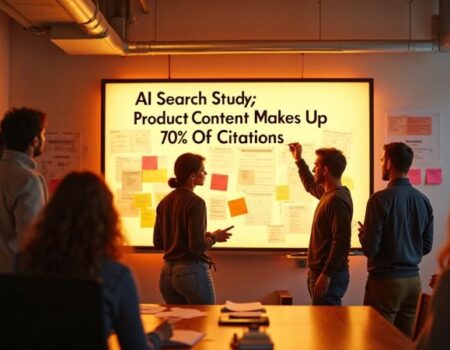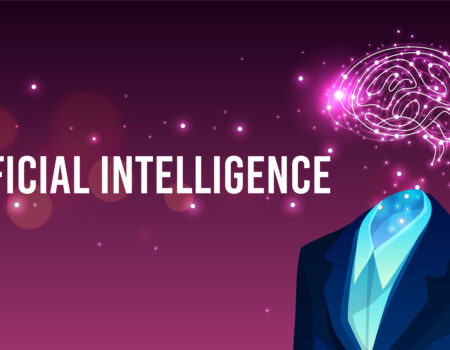Autonomous Agents in Action: How AI Agents Improve Customer Experience & Solve Business Challenges
When you hear the word agent, do you picture a real estate agent, an FBI operative, or maybe an insurance representative? Beyond these familiar roles lies a new generation of agents—powered by artificial intelligence—that don’t just assist, but act independently to accomplish goals.
Imagine a world where intelligent technology could take over repetitive tasks, make decisions, and drive real results. Thanks to automation and machine learning, that world is no longer science fiction. Autonomous agents are already transforming how businesses operate, delivering task automation and improved business efficiency.
Although only 1% of software solutions used autonomous agents in 2024, that figure is predicted to grow to 33% by 2028. In this guide, I’ll show you how these AI agents work, how they enhance customer experiences, and how to begin using them in your organization.
What exactly are autonomous agents?
Autonomous agents are a category of artificial intelligence that can make decisions and perform tasks with minimal or no human input. These AI-powered systems are designed for task automation and can independently interact with their environments to accomplish specific goals. They’re part of the broader world of agentic AI, which blends automation and adaptive intelligence to elevate business workflows.
One of my favorite representations of an autonomous agent is Roz, the robot from the animated movie The Wild Robot. After crash-landing on a remote island, Roz quickly learns from her surroundings and devotes herself to taking care of an orphaned gosling. Like Roz, AI agents take initiative, adjust to dynamic environments, and act independently to achieve desired outcomes.
What sets agentic AI apart from other AI applications—such as foundation models like ChatGPT—is its use of real-time data and continuous environmental inputs. While traditional AI systems depend on human-generated prompts and static datasets, autonomous agents rely on live feedback to make ongoing decisions and optimize outcomes.
So, whether you’re aiming to improve Instagram marketing or streamline operations, autonomous agents can enhance AI workflows and drive measurable improvements in business efficiency.
How Autonomous Agents Enhance AI Workflows, Reduce Costs & Improve Customer Satisfaction
From marketing and sales to customer service, companies are developing autonomous agents to tackle critical business functions. Gartner predicts that agentic AI will handle up to 80% of customer service issues by 2029. But what does that mean in your day-to-day business?
Autonomous agents go beyond the reactive nature of AI agents like chatbots or voice assistants. Unlike Siri or Alexa, which require user prompts and operate within fixed datasets, autonomous agents independently analyze environments, adapt, and act on real-time data—without waiting for instructions.
“Think of a chatbot as something that responds based on an FAQ or existing knowledge base. But an autonomous agent proactively engages the customer and adjusts to changing scenarios,” says Zack Hamilton, Head of Growth Strategy and Enablement at parcelLab.
Hamilton shares an example: “One of the first autonomous agents we built monitored late packages. It used data from carriers and warehouses to automatically alert customers about delays. This led to a 20–30% reduction in ‘Where’s my order?’ inquiries.”
How do autonomous agents show up in real-world use cases?
Here are just a few examples:
- Self-driving cars using real-time data to navigate.
- AI trading bots that execute financial decisions without human input.
- AI content agents that personalize campaigns based on user behavior.
- AI coders writing and debugging based on high-level prompts.
- AI cybersecurity agents that detect and respond to threats autonomously.
- Autonomous drones and delivery robots managing logistics.
These applications show how autonomous agents are reshaping automation and boosting business efficiency. From reducing fraud and customer churn to lowering operational costs by up to 30%, their impact is real—and measurable.
Autonomous Agents vs. AI Agents: What’s the Difference?
| Autonomous Agent / Agentic AI | AI Agent | |
|---|---|---|
| Level of Independence | Fully autonomous | Requires user input |
| Complexity | Handles dynamic environments | Works best with structured tasks |
| End Goal | Goal-driven problem-solving | Task completion based on fixed instructions |
| Learning & Adaptability | Continuously evolves using real-time data | Static and rule-based |
As AI workflows grow more sophisticated, the shift from traditional AI agents to autonomous agents is inevitable. By embedding artificial intelligence that learns and acts proactively, businesses can significantly improve customer satisfaction and streamline operations.
Want to reduce call volume and automate high-value tasks? The future of business lies in deploying autonomous agents.
The Inner Workings of Autonomous Agents: From Perception to Optimization
If you’re interested in creating your own autonomous agent, understanding how they function is essential. Each type of agent uses a unique model, but they all rely on a similar core process—one that blends machine learning, natural language processing (NLP), and reinforcement learning to perform goal-oriented actions independently.
Agentic AI builds these systems using foundation models, tools, and dynamic architectures. Unlike traditional AI agents, autonomous agents are designed to plan, adapt, and respond to unexpected challenges.
Here’s a step-by-step look at how autonomous agents operate:
- Environmental Perception
The agent begins by absorbing input from its surroundings.
Example: Roz, in The Wild Robot, searches for a customer but is hit by a large wave—an environmental challenge that must be processed. - Strategic Analysis
Next, the agent identifies the optimal action in response to the data.
Roz analyzes her situation and decides that scaling a cliff will offer safety and a better view to continue her mission. - Autonomous Execution
With no human guidance, the agent takes action based on its decision.
Roz makes the attempt—but falls back into the water, learning that the strategy needs refinement. - Continuous Learning & Optimization
Using reinforcement learning, the agent improves future performance.
Roz observes a crab’s successful sideways climb and mimics the method—this time reaching the top.
Different Models, Different Strengths
Now that you understand the operational process, consider the types of autonomous agents available. Each one is built for a specific context—some for content automation, others for logistics or security. The right fit depends on your business goals and workflow needs.
With the right model in place, autonomous agents can supercharge your automation efforts, helping your organization unlock new levels of business efficiency and customer service through flexible, intelligent AI workflows.
Types of Autonomous Agents: From Reflexive Responses to Hierarchical Intelligence
Not all autonomous agents are built the same. Depending on the complexity of the task, the environment, and the desired outcome, different models of agentic AI are used to automate and optimize decisions. Let’s break down the major types—and how they work.
Deliberative Agents
These AI agents take a thoughtful, planned approach to action.
- Example: A chess-playing artificial intelligence system that simulates future moves before making a play.
- How they work: Deliberative agents maintain an internal model of the world. They rely on symbolic reasoning, search algorithms, and planning techniques to weigh different options and pick the most strategic path forward.
Reflexive Agents
These agents react immediately to real-time data—perfect for basic automation.
- Example: A thermostat that adjusts temperature based on a sensor reading.
- How they work: Reflexive agents monitor environments constantly through sensors or simple inputs and respond with predefined rules. While not standalone examples of agentic AI, they serve as vital components within more complex autonomous systems.
Hybrid Agents
Combining the best of both worlds—deliberative and reflexive systems—hybrid agents are built for real-world challenges.
- Example: A self-driving car that plans its route using deliberative logic but also hits the brakes instantly when a pedestrian appears.
- How they work: These autonomous agents integrate fast reflexive actions with advanced planning and utility-based decision-making, making them highly effective in dynamic environments.
Model-Based Agents
These agents simulate the future to make better decisions.
- Example: A Roomba vacuum that maps out a room to navigate and avoid obstacles.
- How they work: Using predictive modeling, these AI systems evaluate how the environment changes in response to their actions. They thrive in situations that demand adaptability and environmental awareness.
Learning Agents
These are your adaptable problem-solvers—AI systems that grow smarter with time.
- Example: Netflix’s recommendation system, which evolves with your viewing habits.
- How they work: Leveraging machine learning and reinforcement learning, these agents improve their behavior through past experiences and user feedback. The longer they operate, the better they perform.
Hierarchical Agents
Think of these as AI agents working in teams, with layers of decision-making power.
- Example: Swarm by OpenAI, where higher-level autonomous agents can assign roles or create new agents to fulfill specific goals.
- How they work: These systems are structured like a business. A Tier 0 “board” sets mission-level direction. Tier 1 “executive” agents make strategic decisions and manage Tier 2 agents tasked with specific actions like support or data processing. Authority flows from top to bottom, and each layer is responsible for carrying out a part of the mission.
Goal-Based vs. Utility-Based Agents
These two categories explain how autonomous agents prioritize decisions:
- Goal-Based: These agents are focused on achieving a specific outcome.
- Example: A Roomba tasked with cleaning all accessible floor space. Once the goal is met, the task is complete.
- Example: Uber’s ride-matching algorithm considers factors like wait time, trip cost, and driver availability to optimize the rider’s experience.
Utility-based autonomous agents are more flexible and sophisticated, often used in real-world scenarios that demand optimization—not just completion.
What This Section Means
Autonomous Agent Example Use Cases refers to real-world business applications where autonomous agents are already being implemented. While agentic AI is still a developing field, these examples show how companies are leveraging artificial intelligence and task automation to improve efficiency, reduce manual labor, and enhance customer experience.
These are not just theoretical concepts—they’re practical, scalable solutions helping businesses across industries transform operations.
VoiceCareAI
VoiceCareAI is a healthcare-focused autonomous agent that listens to patient voices to detect potential health concerns.
It uses AI workflows and machine learning to monitor tone, energy, and speech patterns for early signs of illness.
This system can notify care teams proactively, improving response time and patient outcomes.
Avride Delivery Robots
Avride deploys autonomous delivery robots capable of navigating city sidewalks and roads to deliver goods.
These robots function without human control, using real-time data and reflexive agentic AI to avoid obstacles and optimize routes.
They help reduce last-mile delivery costs and improve logistics efficiency.
LOXM by JPMorgan & Chase
LOXM is an AI agent developed by JPMorgan that autonomously executes trades in the stock market.
It uses deliberative agent strategies to analyze market data and decide the best timing and volume for buying or selling.
By reducing human intervention, LOXM enhances trading precision and speeds up transaction execution.
How to Put Autonomous Agents Into Action for Your Business
So, how do you bring the power of autonomous agents to your team? I asked customer experience and AI strategy experts who’ve implemented agentic AI firsthand. Their advice was simple: start small, stay focused, and let the data guide your decisions. Here’s how you can begin building practical AI applications that deliver value.
1. Identify pain points in your business
Start by mapping the recurring problems your team faces—high support volume, data bottlenecks, churn risks. Autonomous agents are most effective when targeted at tasks that eat up time or limit business efficiency.
2. Define objectives
Be clear about what success looks like. Whether it’s increasing customer satisfaction, reducing costs, or automating a specific workflow, goal clarity will guide the AI agents and shape the behavior of your agentic system.
3. Choose the right tools
Select platforms or frameworks built for AI workflows and task automation. Depending on your needs, this could include tools for machine learning, natural language processing, or end-to-end autonomous agent design.
4. Develop and test
Build a small pilot using your chosen framework and test it in real-world scenarios. The goal is to observe how your artificial intelligence agent behaves and adapts, and to tweak for performance and usability.
5. Integrate with existing systems and data
For autonomous agents to work well, they must connect with your current systems—like CRMs, order tracking, or knowledge bases. This enables them to pull real-time data and deliver smarter, goal-driven outcomes.
6. Prepare and upskill your team
Change management is key. Train your employees to work alongside AI agents, ensuring they understand the benefits, capabilities, and limitations. When humans and machines collaborate, results improve across the board.
7. Monitor and optimize
Track performance through metrics like completion rates, time saved, or customer sentiment. Because autonomous agents are adaptive, continuous feedback and tuning make them more accurate and effective over time.
8. Scale up
Once the model works, expand its reach—add new workflows, use cases, or departments. With the right foundation, agentic AI can help you scale business operations while improving customer experience and maintaining control.
Partner with our Digital Marketing Agency
Ask Engage Coders to create a comprehensive and inclusive digital marketing plan that takes your business to new heights.
Autonomous Agents Are Already Changing the Game
From everything I’ve seen, autonomous agents aren’t just another AI buzzword—they’re a major shift in how businesses deliver value. They go far beyond reactive AI assistants, using data, context, and learning to power next-gen AI applications that drive growth.
So instead of asking if you should invest in autonomous agents, the real question is: How quickly can you start? With the right mindset and a plan rooted in change management, you’ll build a smarter, faster, more resilient team ready for the future.







